
Hucho mentions in his books that,after detail optimization,lower drag can only be achieved by elongating the body to reduce or eliminate the turbulent wake.(This is the entire premise of ground vehicle streamlining)
Here is an illustration to show what he's talking about.
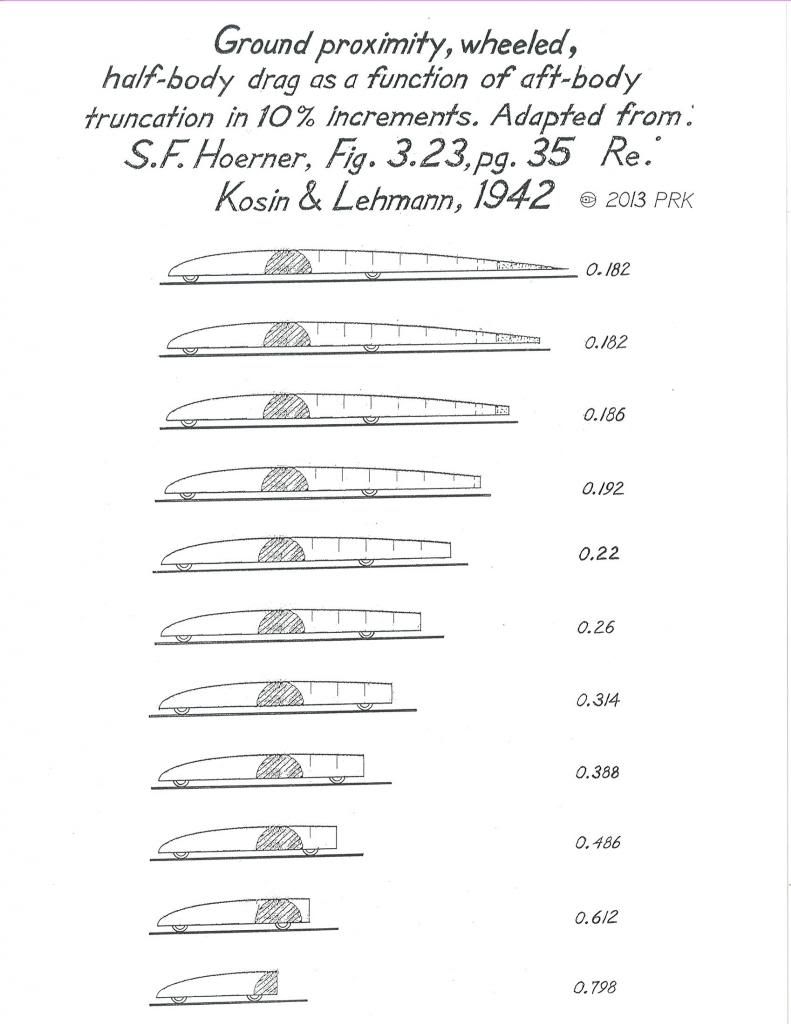
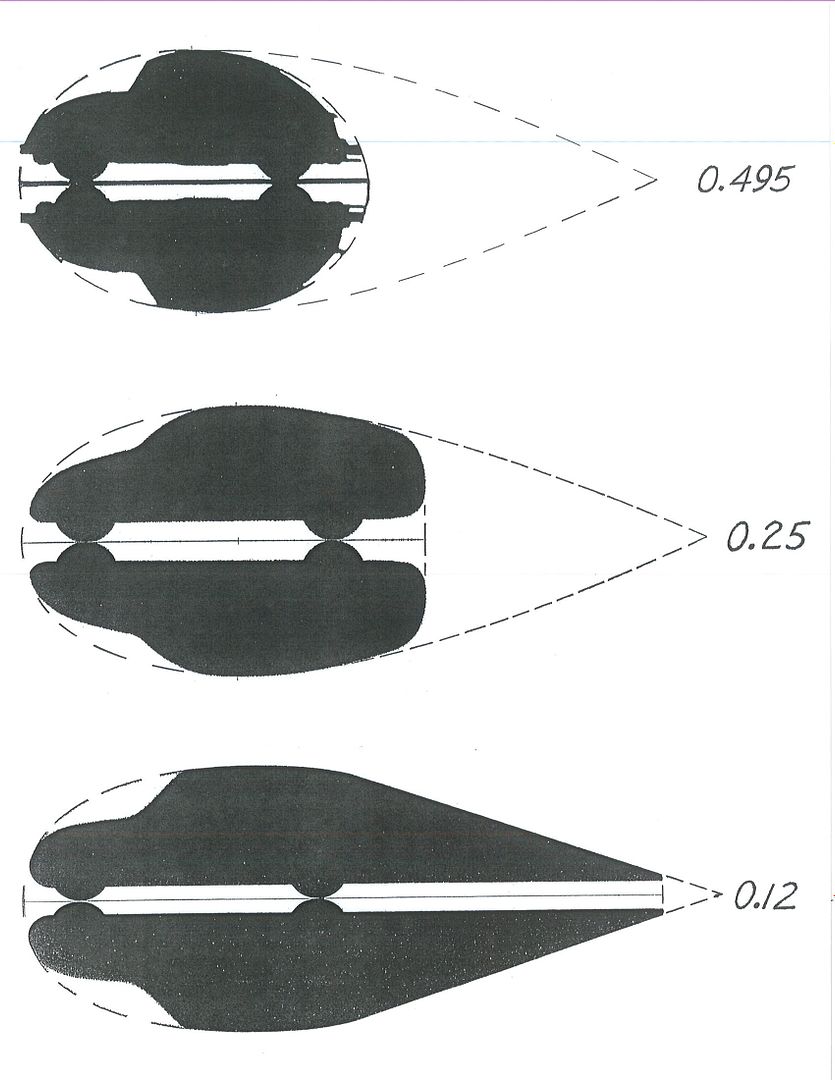
--------------------------------------------------------------------------
The lowest drag for a 3D-flow automotive body is achieved when the body has a length which is 5X it's body height,or an effective fineness ratio of 2.5:1
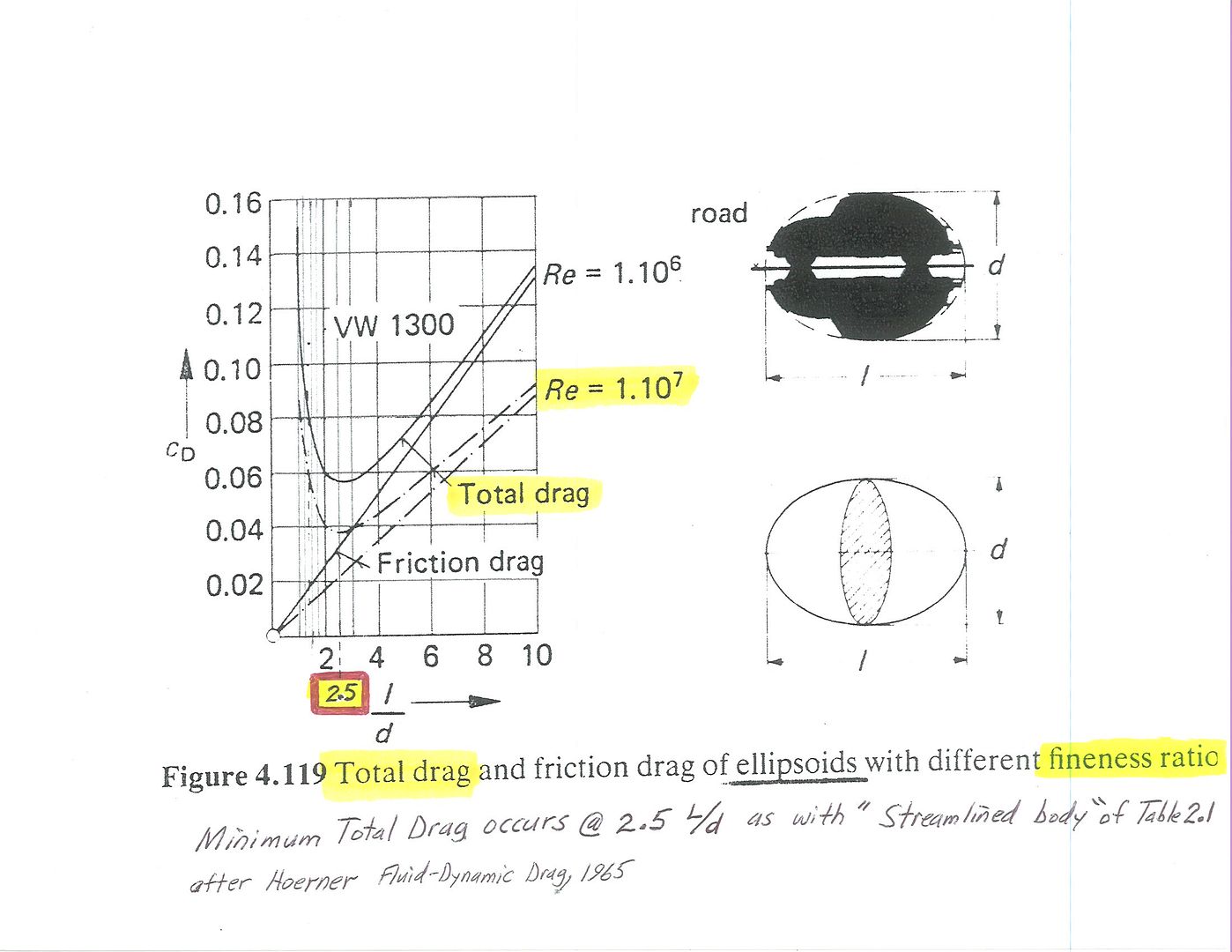
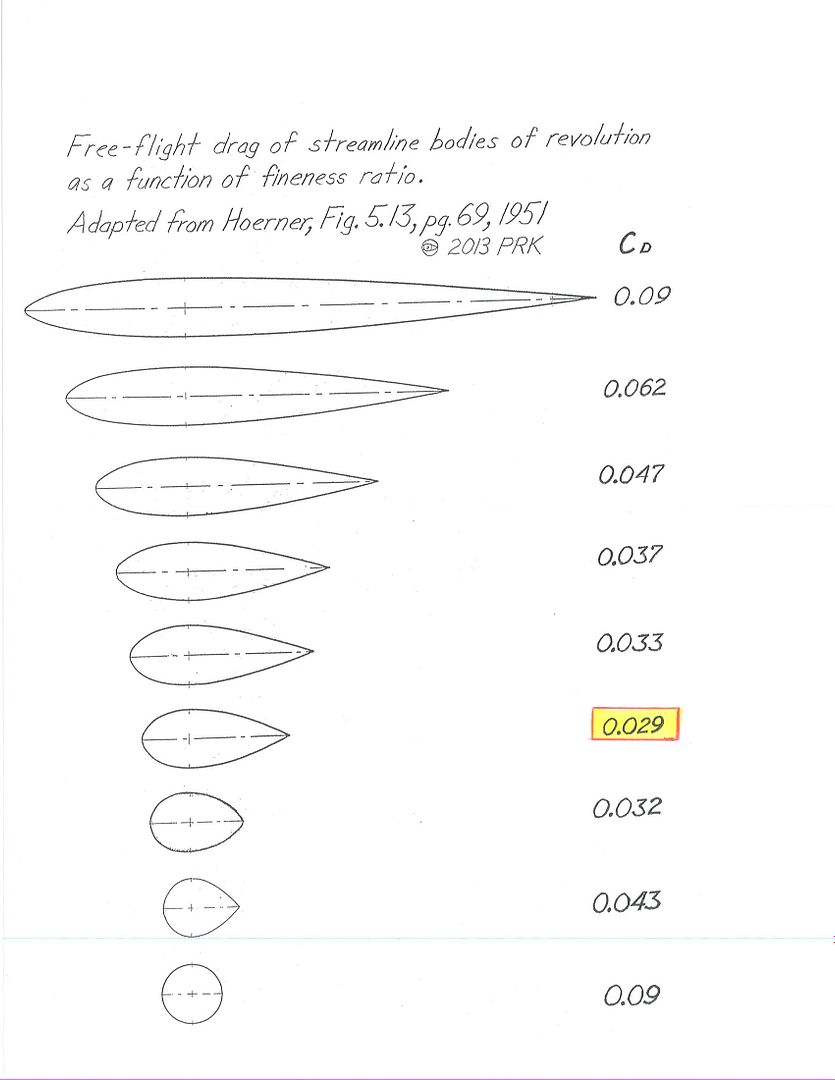
For 2D-flow,as with a motorcycle,the minimum drag is achieved when the body is about 4X as long as the body is wide
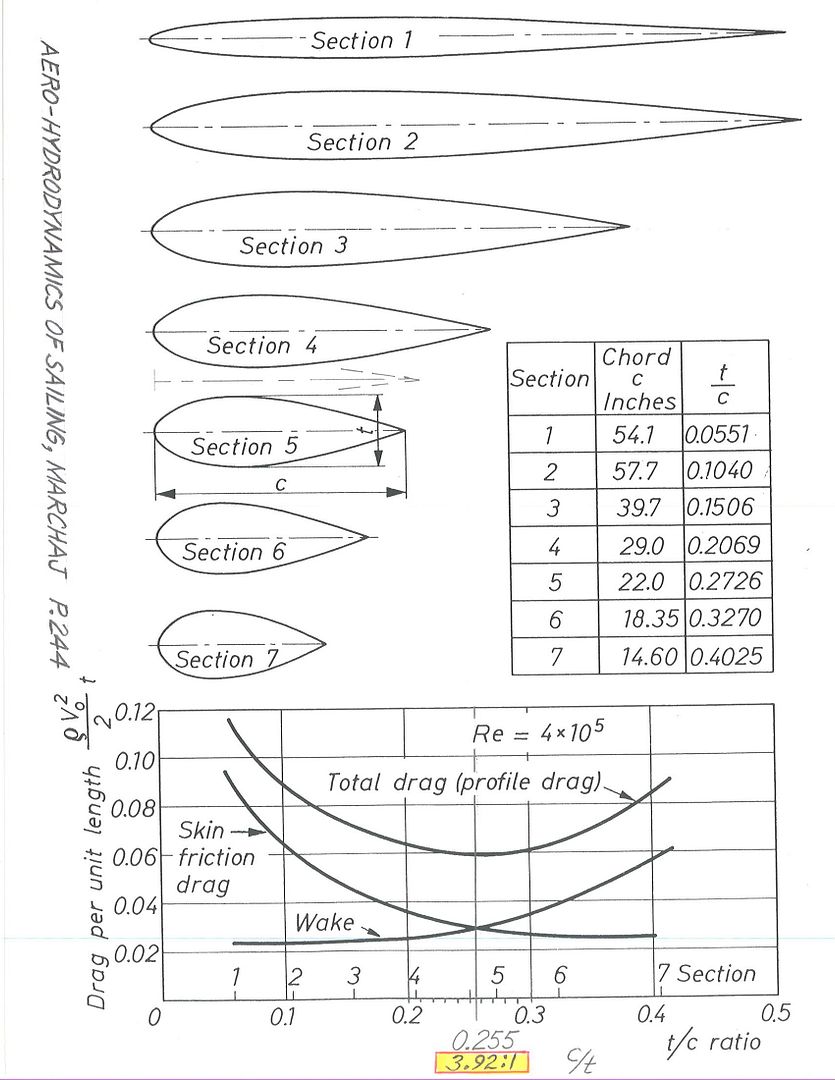

As you can see,for either 3D or 2D flow,each body has a 'sweet spot'.If the body is shorter or longer,the drag rises.
-------------------------------------------------------------------------
If the project vehicle has attached flow up to it's rear edge,then simply boat-tailing the body will provide the separation-free reduction,or elimination of the wake as you can see in Mair's boat tail research.
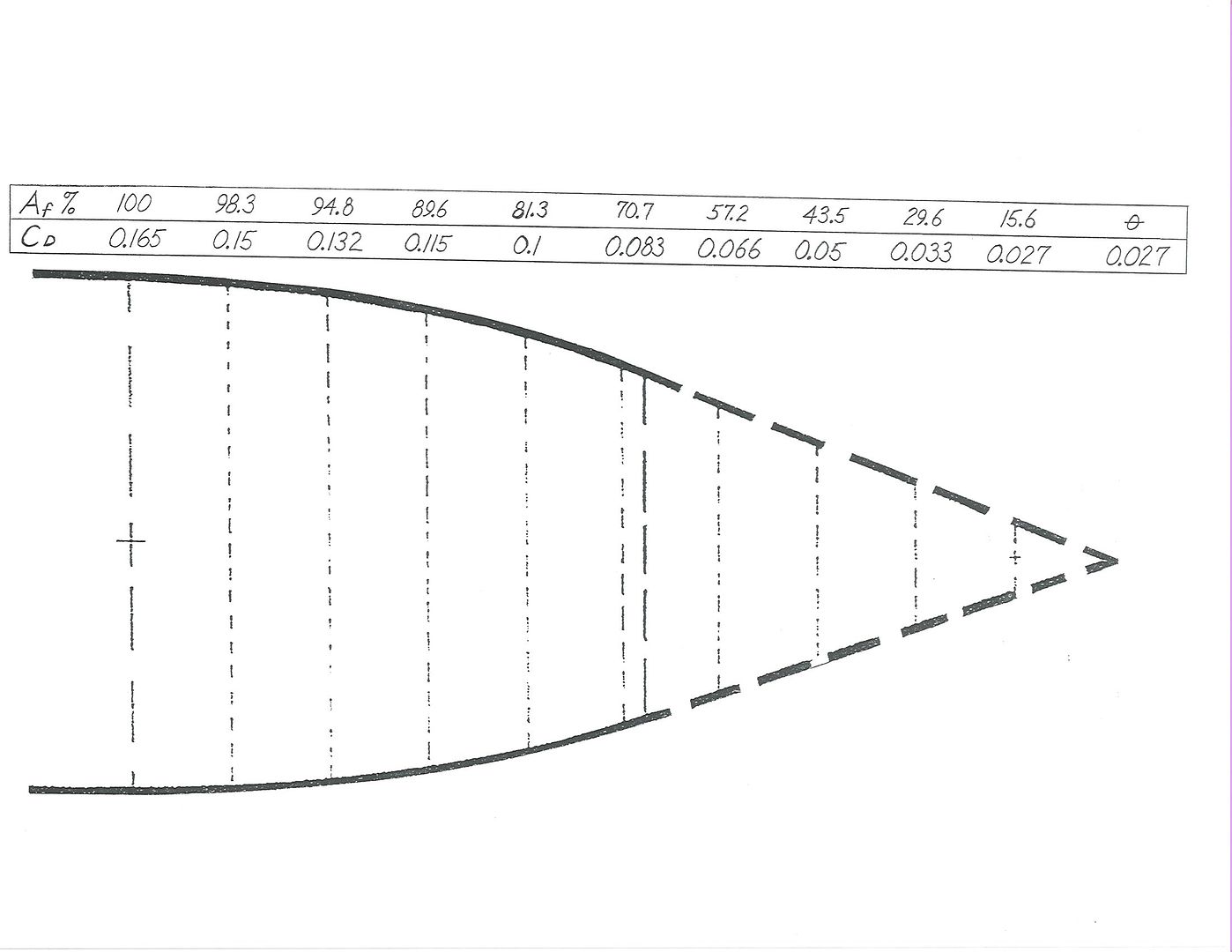
One only needs to decide what car length they're willing to live with.
--------------------------------------------------------------------------
'Active' aerodynamics offers the option of a 'longer' car only on the highway,while a 'shorter' car for around town traffic and parking



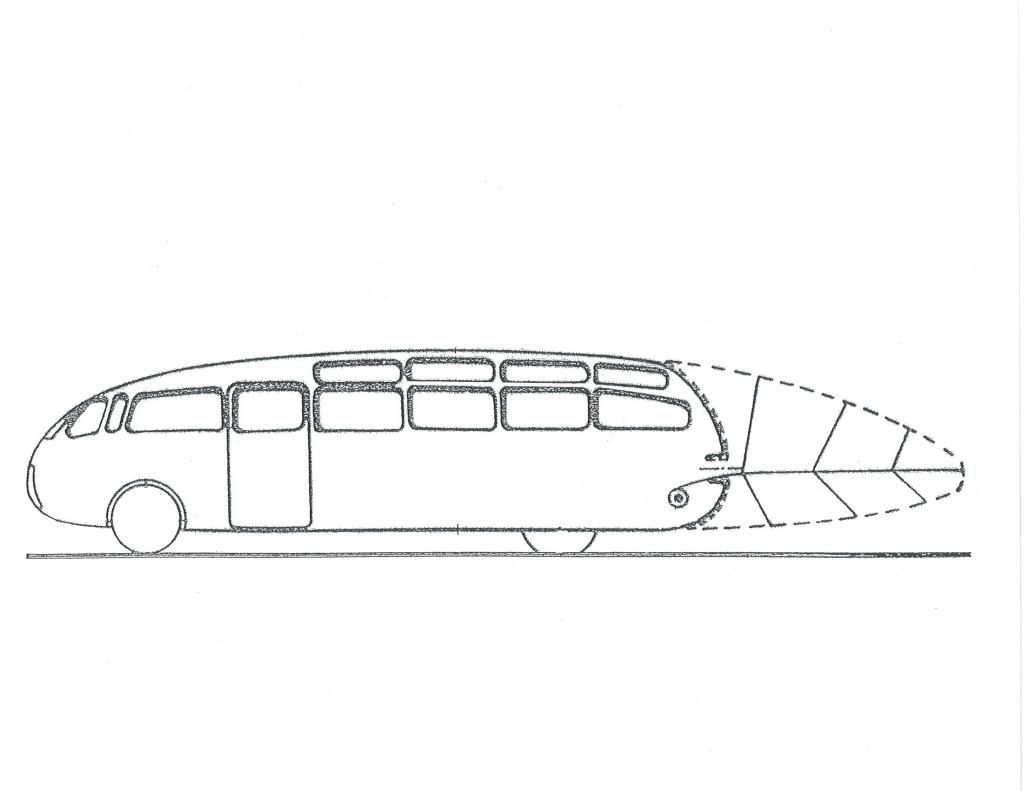


--------------------------------------------------------------------------
Here is the Daimler-Benz,Mercedes-Benz C-111 III of 1978 at three different lengths which illustrate what the boat-tailing did to drag coefficient
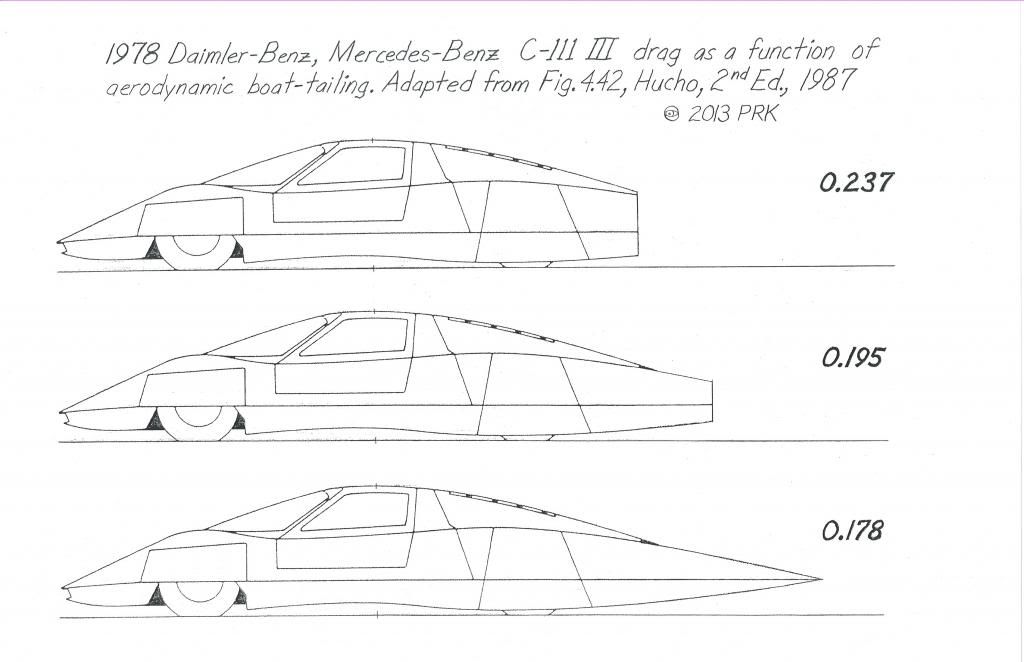
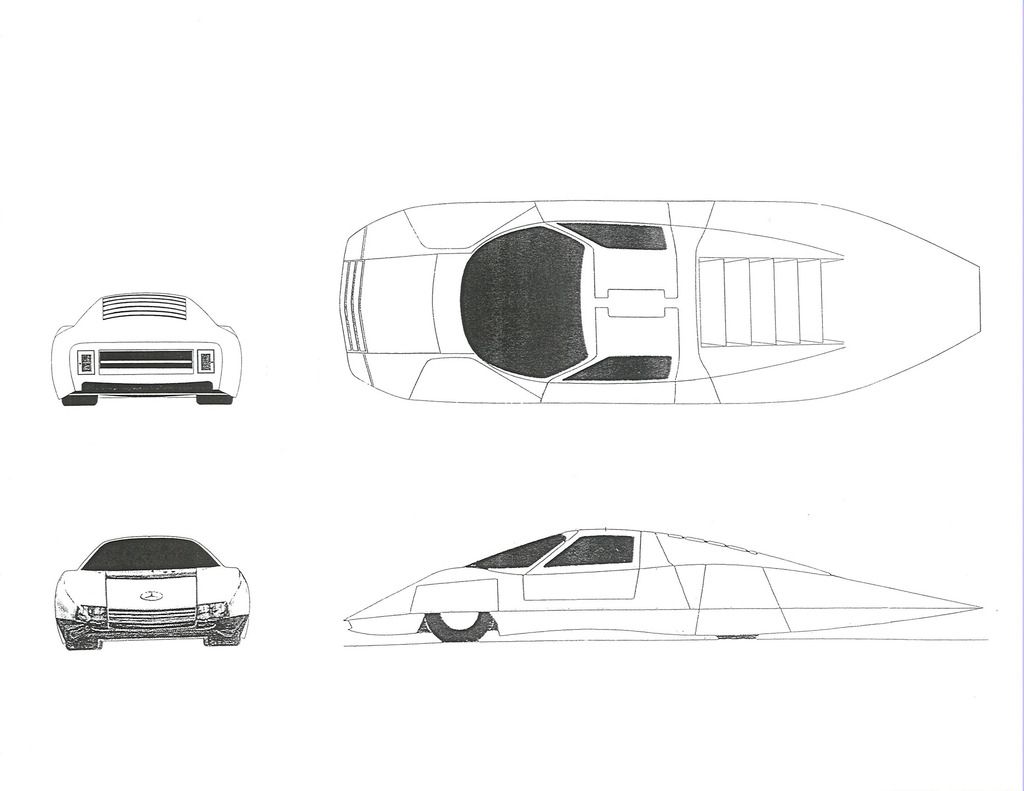
-------------------------------------------------------------------------